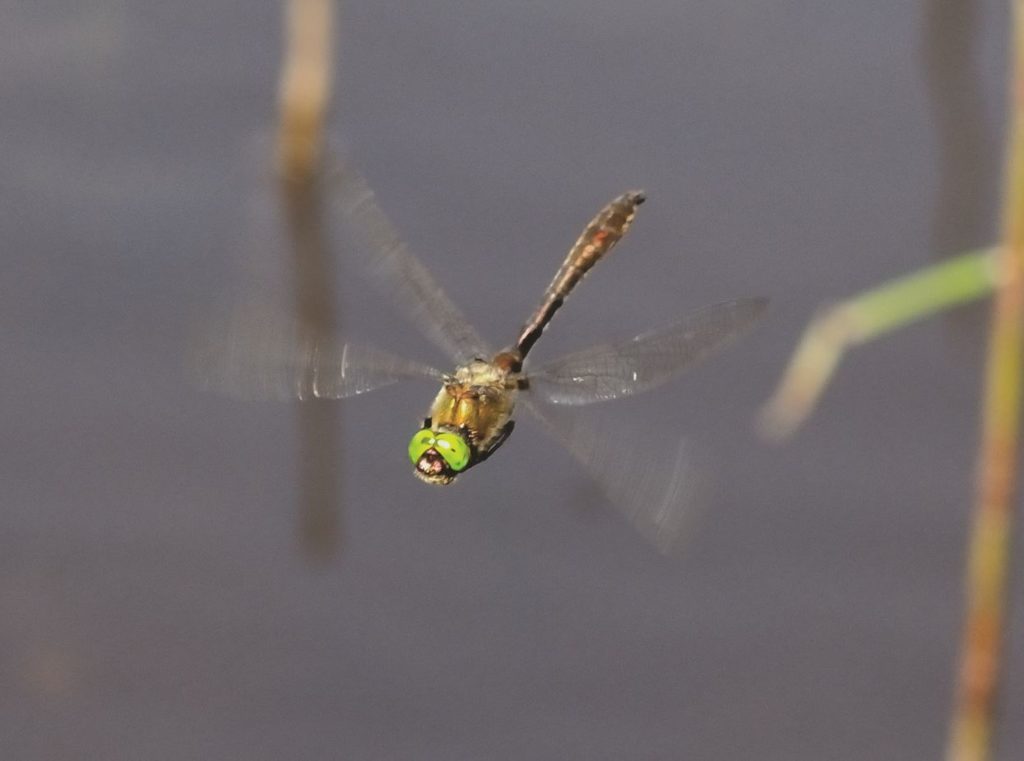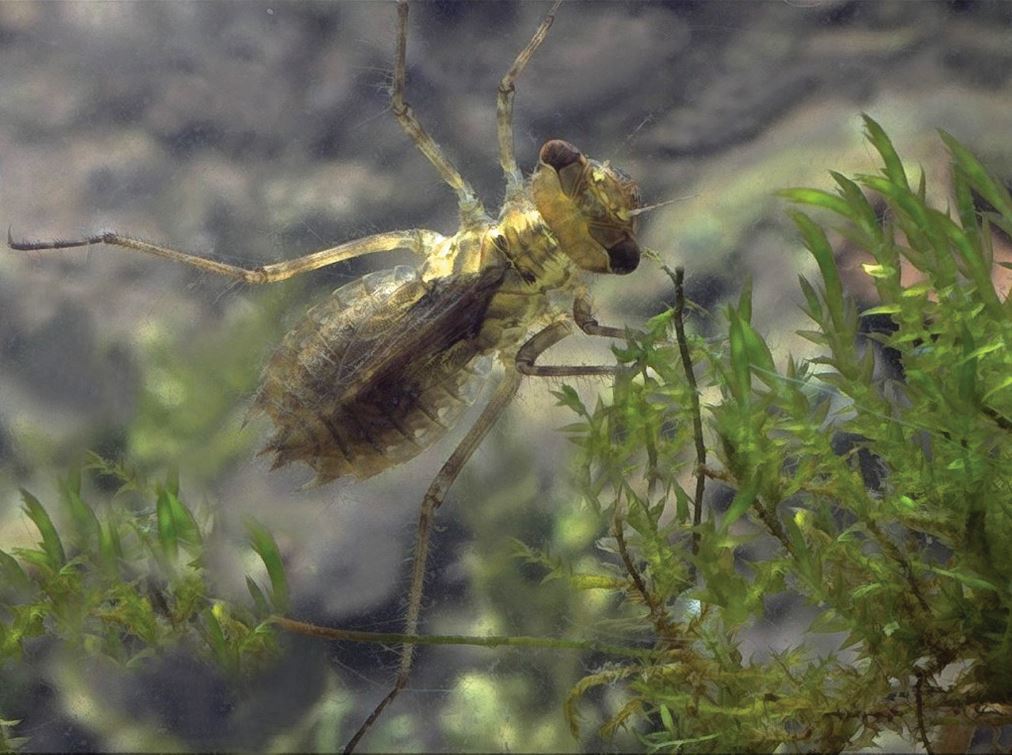Dragonflies and damselflies
Despite being linked with the Ephemeroptera within the Palaeoptera, the Odonata have a very different appearance from the mayflies. The wings are long, narrow and parallel-sided, and the fore and hind wings are the same length. Details of the wing venation are widely used at the higher level classification.
There are two distinct suborders of Odonata: the Zygoptera, or damselflies, and the Anisoptera, or dragonflies, although members of the whole order are often known colloquially as dragonflies. A third suborder was formerly recognised, the Anisozygoptera known from just two species in southeast Asia, but these are now considered as Anisoptera.
Adult Odonata are well known to most people; their bright colours, rapid flight and impressive behaviour during territorial defence, courtship and hunting prey always attract attention.
 Southern hawker dragonfly Aeshna cyanea Credit Roger Key
Southern hawker dragonfly Aeshna cyanea Credit Roger KeyIn contrast to the Ephemeroptera, dragonflies are very strong and agile fliers and they are fierce and effective aerial predators. They have many morphological features that enhance this predatory role: the large compound eyes give them acute vision; their spiny legs are held forward, basket-like, to catch prey on the wing; and to aid this function the thorax is skewed to bring the leg attachments forward. As a result, the wing attachments are towards the back of the thorax, which enables the wings to keep clear of the legs and the directly attached flight muscles allow the fore and hind wings to beat independently, greatly increasing manoeuvrability in the air.
 Independently beating wings of Cordulia aenea Credit Robin Williams
Independently beating wings of Cordulia aenea Credit Robin WilliamsSome adults chase their prey during patrolling flights; others dart out quickly from a favourite perch. These two kinds of flight are also exhibited by the highly territorial males; these either regularly patrol their chosen site for a female to oviposit, or else wait on a perch and fly out quickly to repel competing males.
Some characteristics are concerned with reproduction, which is complex in this group. The first stage is for the male to grab the female’s thorax with his legs, and then grasp her behind the head with his anal appendages. The pair can then continue flying in a straight line, the male in front, in the so-called tandem position. Next the male transfers sperm from the gonopore at the apex of the abdomen to his secondary intromittent organ (often loosely called the penis) on the ventral side of the second abdominal segment. The female then brings the tip of her abdomen round in a circle to pick up the sperm from the male, a position known as the copulatory wheel.
 Mating pair of Golden-ringed dragonfly Cordulegaster boltonii Credit Roger Key
Mating pair of Golden-ringed dragonfly Cordulegaster boltonii Credit Roger KeyThe couple may remain united until the female is ready to oviposit, when they either revert to the tandem position or else the male remains close by, guarding the female as she lays alone. This prolonged association obviously increases the male’s chances of successfully breeding, and his intromittent organ can even displace sperm that the female has acquired from an earlier mating. The eggs are either laid into plant tissue using a piercing ovipositor, or else are dropped into the water where they often adhere to the outside of aquatic vegetation.
Odonata nymphs are found in a wide range of aquatic habitats, though they are usually restricted to still or slow water. The carnivorous nymphs feed on a wide variety of invertebrates, especially insect larvae, though the larger nymphs can capture small fish. The head has an extensible labium, known as the mask, which can shoot out at high speed to catch almost any prey within range.
 Libellulid dragonfly nymph Credit Roger Key
Libellulid dragonfly nymph Credit Roger KeyMost damselfly nymphs have a narrow cylindrical body with three plate-like caudal lamellae at the end of the abdomen; these are gills but can also help with locomotion. The larger dragonfly nymphs often have stouter bodies with five small spines at the abdominal apex; their gills are internal to the rectum and oxygen is extracted from water pumped in and out of the anus.
Worldwide there are around 5,600 known species in 33 families; in Britain there are 49 species in 9 families.
Identification help